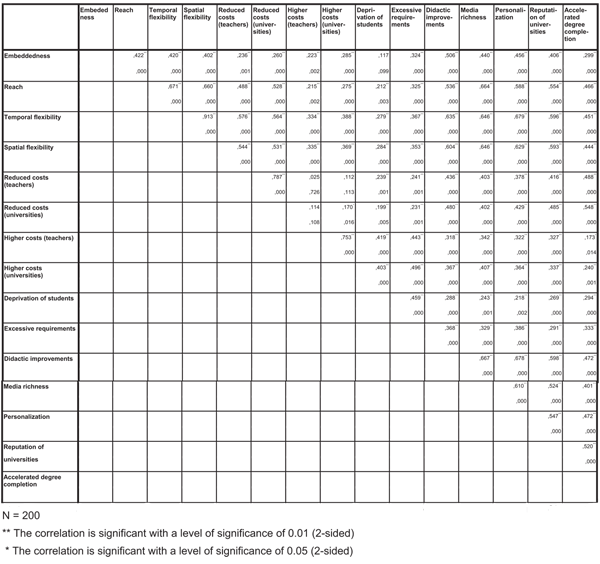Performance of Blended Learning in University Teaching:
Determinants and Challenges
urn:nbn:de:0009-5-26270
Abstract
Blended learning as a combination of classroom teaching and e-learning has become a widely represented standard in employee and management development of companies. The exploratory survey “Blended Learning@University” conducted in 2008 investigated the integration of blended learning in higher education. The results of the survey show that the majority of participating academic teachers use blended learning in single courses, but not as a program of study and thus do not exploit the core performance potential of blended learning. According to the study, the main driver of blended learning performance is its embeddedness in higher education. Integrated blended programs of study deliver the best results. In blended learning, learning infrastructure (in terms of software, culture, skills, funding, content providing, etc.) does not play the role of a performance driver but serves as an enabler for blended learning.
Keywords: blended learning, e-learning, higher education, university teaching, integration of blended learning, performance of blended learning, hybrid concepts
The concept blended learning – as a combination of e-learning and classroom teaching – is meanwhile quite commonly used in employee and management development. There are some signals that this concept is also implemented in higher education (Allen & Seaman, 2007; Allen, Seaman, & Garrett, 2007). Blended learning is basically used to gain benefits in terms of efficiency as well as of effectiveness (Garrison & Kanuka, 2004). E-learning forms can increase the efficiency by cost savings which, in turn, build upon their virtualization potential. E-learning can lead to a virtualization of teaching and learning by overcoming temporal and spatial restrictions (Aspden & Helm, 2004). Thus, travel costs, facility costs, and payments for teachers can be reduced to a considerable extent (Laurillard, 2007). The increase in learning effectiveness is mainly based on the deployment of a diversified mix of methods and media. Thereby, didactical concepts can be improved by using the adequate mixes with respect to different learning contents and different groups of learners. This approach eventually leads to a higher degree of personalization of learning processes. The advantages of blended learning can be accomplished by the mutual compensation of weaknesses of extremely diverse learning forms and by bundling their strengths to generate synergy (Garrison & Vaughan, 2008, p. 4 et seq.).
To use blended learning in university teaching and to leverage its advantages, the need for a substantial infrastructure is often mentioned. However, the infrastructure for blended learning does not only consist of information technology (Bullen & Janes, 2007) which is by definition required for e-learning (e.g., Kirkley & Kirkley, 2005). It also encompasses other infrastructural sectors like, for example, organizational aspects (caretakers, coordinative committees, etc.), skill and will factors of the involved persons (learning motivation, self management skills, etc.) and culture (educational philosophy of institutions, teaching as support of learning-principle, etc.) as well as the financial resources dedicated to the implementation and utilization of blended learning (Reiss, 2004; Reiss, Bernecker, & Steffens, 2006). So far, it is unclear whether the infrastructure of blended learning merely plays the role of a context factor or represents a performance driver.
At present, the majority of surveys, articles, and discussions in the field of innovations in university teaching deal with e-learning. The fact that the implementation of e-learning innovations requires integration with face-to-face-learning and hence that blended learning is the true innovation “beyond” e-learning (Reay, 2001) is getting considerably less attention in academia. Contrary to this, blended learning already represents a standard learning model for human resource development in companies (Bersin, 2004). Empirical evidence on the incidence of academic blended learning is mostly case study-based (e.g., Brahm, 2008, Davis, & Fill, 2007; Davies, Ramsay, Lindfield, & Couperthwaite, 2005; Eijl, Pilot, & Voogd, 2005; Kerres 2005; Motteram, 2006; Schönwald, 2007; Walter, 2007 – an extensive overview of the research in this discipline is given in Arbaugh, Desai, Rau, & Sridhar, 2010; additional current studies can be found on http://www.e-teaching.org/materialien/studien/ ). However, the interest in this topic is rising as higher education currently undergoes profound changes (Siemens, & Matheos 2010).
Especially detailed knowledge on different categories of e-learning (e.g., web 1.0- vs. web 2.0-based tools) as well as on different combinations of e-learning and classroom teaching in higher education settings is still missing. Even less empirical data are available on the performance of blended learning in university teaching, let alone the factors that determine its performance, e.g., the advantages, costs, and the occurrence of disadvantages.
As far as integration of blended learning in higher education is concerned, blended learning must be examined in two arenas of integration.
The intra-concept integration covers the integration within the concept blended learning, i.e. the integration between its two components e-learning and classroom teaching (Thorne, 2003). Intra-concept integration can be examined on a quantitative as well as on a qualitative basis. The proportions of e-learning and classroom teaching (as percentages of e-learning and classroom teaching) serve as a measure for the quantitative integration within blended learning. The qualitative perspective focuses on the diversity within the mix of learning forms and how they are linked to each other (“blending forms”).
Diversity is not only created by contrasts between e-learning and classroom teaching. Other features of learning forms like, for example, the level of interactivity, spatial and temporal flexibility, the underlying didactic concept (e.g., instruction-oriented vs. constructivist) account for a bigger part of the diversity between two learning forms. The blending patterns can be separated into patterns of close coupling (conjunct blending) and of loose coupling (disjunct blending). Loose coupling exists, for example, when classroom teaching is used to deliver a certain type of learning content (e.g., soft skills) and e-learning is used for a different type (e.g., professional skills). Differentiating learning forms according to the learning phase also represents a form of loose coupling: both content- and phase-dependent blending lead to a relatively low degree of redundancy or overlapping.
When learners have the opportunity to choose between e-learning and classroom teaching for the same learning content, the blending pattern creates significantly more redundancy between the two learning forms and thus represents a form of close coupling. Redundancy, in turn, results in high costs for the university. For example, e-learning forms offered additionally to classroom teaching (e.g., to reach students during their stay abroad) provide a higher degree of individualization, but they also create the need for a doubling of learning contents which makes them cost-intensive. The requirement for a standardization across e-learning and classroom teaching forms (e.g., with respect to layout and didactics) even intensifies this cost problem.
The concept-context integration as the second arena of integration takes place between the concept “blended learning” and its context, i.e. university teaching. It refers to the depth to which blended learning is embedded in higher education. The highest level of embeddedness is obtained if blended learning is used as an integrated concept for a program of study (“blended program of study”). To provide temporal and spatial flexibility for the students, some courses are offered as e-learning while others have to be attended physically.
Blended learning on the course level means that e-learning and classroom teaching forms are combined within one course, e.g., in semi-virtual seminars. This application use of blended learning can be accomplished on two different levels of embeddedness: applying blended learning concepts in one pilot course represents a lower level of embeddedness than applying it in more than one course, since the latter corresponds to a further step in the implementation of blended learning in university teaching.
Effectiveness and efficiency in qualification processes are the drivers for the use of blended learning in human resource development of companies as well as in university teaching.
The performance of blended learning is measured by several criteria. The direct performance impacts of new learning forms in university teaching are the advantages and disadvantages of e-learning. Since the objective of blended learning is the compensation of weaknesses and the creation of synergies between the combined learning forms, the exclusive assessment of these advantages and disadvantages of e-learning is not sufficient. In fact, the combination of diverse elements like e-learning and classroom teaching leads to interdependencies as well as compound effects. These effects cannot be assigned to one of the two different learning forms, they result from the blending.
The context of blended learning, i.e. higher education, is best characterized in terms of infrastructure. The infrastructure of blended learning consists of two domains. On the one hand, the production infrastructure contains manpower, facilities and other resources for the generation of learning assets (contents, tools, etc.). In the case of blended learning in university teaching, it encompasses human resources for content production as well as financial resources for the funding of blended learning. On the other hand, the coordination infrastructure accomplishes the alignment of learning activities, both for the coordination among all actors involved in the learning and teaching processes (e.g., learners, teachers, commercial providers, educational institutions, public funding agencies) and for the coordination of processes (e.g., content production, IT support, learning, teaching, etc.). This coordination infrastructure for blended learning in university teaching covers five sectors (see figure 1).

Figure 1. Coordination infrastructure for blended learning
The information infrastructure for blended learning is a quite obvious and frequently discussed aspect of e-learning and blended learning infrastructure. It contains information instruments to support learning and knowledge management processes. These range from websites to provide teaching materials for download to elaborated learning platforms and technologies such as CSCW, learning content management systems and wikis.
In the human resource infrastructure for blended learning both motivation and competencies of the learners have to be taken into account. Blended learning and especially the e-learning elements of it often have to deal with problems of lack of acceptance. Learners tend to stick to familiar methods of learning rather than embrace new forms. Thus, the use of instruments for the promotion of motivation (as one of the acceptance factors) is often considered vital for the success of blended learning. In addition to motivation for using e-learning forms, the students’ competencies to integrate them effectively and efficiently into learning processes also play an important role for their acceptance. These competencies encompass IT-competencies (ability to use the IT tools) as well as self-management competencies (ability to manage individualized learning processes). To develop such competencies, some institutions conduct specific trainings.
The technocratic infrastructure consists of instruments for the planning of learning processes and the evaluation of learning performance. Many recent publications in the field of e-learning and human resource development focus on tools for performance evaluation (e.g., Tastle, White, & Shackleton, 2005; Voigt & Swatman, 2004), and thus on the technocratic infrastructure of blended learning. Not only companies but also universities must oppose the outcomes to the costs of learning processes in order to determine a “return on education” (e.g. Back, Bendel, & Stoller-Schai, 2001).
The organizational infrastructure contains sourcing models (e.g. purchase and/or self-designing of learning contents and e-learning tools) as well as organizational structures (e.g. cooperation with other universities/private partners). The integration of blended learning in university teaching often requires extensive investment in IT systems and staff which can not be raised alone by many universities. To deal with this financial challenge, cooperation in networks, as part of the organizational infrastructure, is common for many institutions.
The cultural infrastructure of a university is, for example, represented by its philosophy, the dominating learning and teaching methods and styles, and its policies concerning attendance in classes vs. self-learning at home. Besides the fit on the individual level (i.e. competencies and motivation for blended learning), the cultural fit on the institutional level (i.e. institutional readiness for blended learning) can also be essential for leveraging the advantages of blended learning.
From a (university) management perspective, the ultimate objective of investigating blended learning is the discovery of performance drivers, i.e. determinants that affect the effectiveness and efficiency of blended learning. Such performance enhancing factors could be either the application of certain infrastructural instruments or the improved integration of blended learning in higher education.
The chair of organizational design and behaviour at Stuttgart University conducted an online survey “Blended Learning@University” from May to July 2008 in order to provide evidence on the status quo of the integration of blended learning in higher education. More than 200 teachers participated in the survey, of which two thirds work for a German university and one third work for institutions in other European and Non-European countries. The vast majority of participants (76%) are employed at a public university and 10% at a private university. Teachers from technical universities are represented by 6%. Participants were mainly recruited from business administration and information management/computer sciences. The focus of the survey on these fields of study is due to their affinity to electronic media and innovative instruments in higher education. Information management as well as business administration have often been pioneers in this area. Some of the specific research objects (e.g., web 2.0, computer-supported cooperative work – CSCW, learning content management systems - LCMS) of information management and computer sciences can also be applied in academic teaching in these disciplines, quite often for the sake of transfer of results into research projects. Thus, it is likely that these academic fields represent sources for good practices of blended learning.
The empirical study Blended Learning@University investigates several different aspects of the use of blended learning in university teaching. Firstly, the survey concentrates on the degree of integration of blended learning in university teaching. Then, the surveyed university teachers were asked for their assessments of the performance of blended learning. Furthermore, the survey investigated different aspects of infrastructure.
From a quantitative point of view, classroom teaching is still dominant: for 85% of the participants, e-learning represents at most 30% of their teaching. In 2004, the “Studies in the Context of the E-learning Initiative” (PLS Ramboll Management, 2004, 62 et seqq.) provided similar results. Apparently, no further substitution of classroom teaching by e-learning has taken place.
The results of the survey “Blended Learning@University” show that the mix of e-learning and classroom teaching represents a widely used concept in university teaching: blended learning is used by 70% of the participants. Only ten percent of the respondents use this concept in pilot projects. This indicates that the pilot phase is over for most of the universities that use blended learning. 21 % of the respondents of the survey stated that a blended program of study exists at their university (see figure 2).
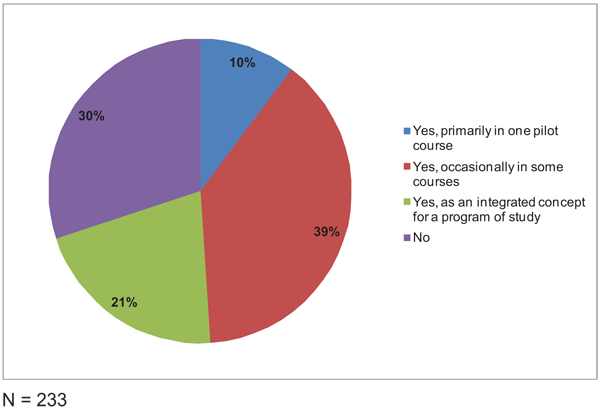
Figure 2. Embeddedness of blended learning in higher education
For an in-depth analysis of blended learning it is especially interesting what learning forms are combined and how the coupling is accomplished. According to the results of the survey, the support of classroom teaching via download of teaching materials represents a widely used combination. This download opportunity is combined with all classroom teaching forms that were included into the survey. The survey reveals only a few other typical combinations of learning forms that are used relatively frequently (from 19% to 31%), e.g., the enrichment of several classroom teaching forms with internet forums or chats. These highly interactive communication and learning forms are not only combined with classroom teaching forms that lack interactivity (e.g., lectures); they are also used in conjunction with workshops, seminars and case study work which already bear a considerable degree of interactivity themselves. In principle, such combinations only lead to redundancy. Although internet forums and chats offer temporal and spatial flexibility to learners and teachers, they do not provide additional didactic opportunities when combined with workshops or seminars. Merely combinations consisting of lectures and web-based/computer-based trainings, which are used frequently by 22% and 16% of the participants, bring together two genuinely diverse learning forms in a didactically productive way. In these teaching arrangements, students can act as consumers of learning contents during lectures, and they can expand and deepen their knowledge in self-managed learning processes using e-learning trainings. In summary, in higher education there still seems to be a lack of systematic blending which productively combines diverse learning forms with the aim of compensating weaknesses and bundling strengths in order to create synergies.
As mentioned above, the blending patterns can be differentiated depending on the degree of redundancy between the combined learning forms. The blending pattern of close coupling between e-learning and classroom teaching (high redundancy) is used frequently only by ten percent of the participants. Blending forms of loose coupling are used relatively frequently in higher education: 40% of the surveyed university teachers apply different learning forms depending on the learning phase, and 37% depending on the learning content. A blending pattern that can be considered “pseudo blending” (since it does not represent a didactic concept) is the administration of classroom teaching with web-based instruments, like, for example, the provision of tools to enroll online for classroom teaching and to inform on schedules. This pseudo blending is used most frequently (66%). Thus, most of the surveyed university teachers base their teaching mainly on classroom activities while they use e-learning solely for the administration of learning.
More than 60% of the respondents consider the effects of e-learning on temporal and spatial flexibility to be positive. 45% assume an improved reach through e-learning, but only 20% think that the costs for teachers and universities can be reduced by using electronic media (see figure 3). Thus, it is predominantly students that benefit from improvements in efficiency in terms of reduced costs through the use of e-learning. Neither universities nor teachers gain substantial improvements in terms of efficiency. On the contrary, the disadvantages in terms of higher production costs in e-learning are considered important for teachers and institutions. The increased costs for hardware are evaluated as a significant disadvantage by 40% of the respondents; the percentage for the personal efforts and costs of teachers is even higher (47%). But it has to be taken into consideration that all of the interrogated persons work as university teachers and are likely to assess their individual disadvantages higher than those of the students. There are also disadvantages for students resulting from the use of e-learning: at least, 38% of the participants consider the problem of social deprivation through virtual learning important (see figure 4).
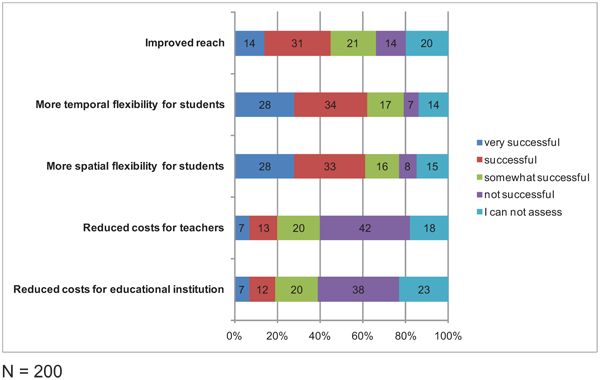
Figure 3. Advantages of e-learning in higher education
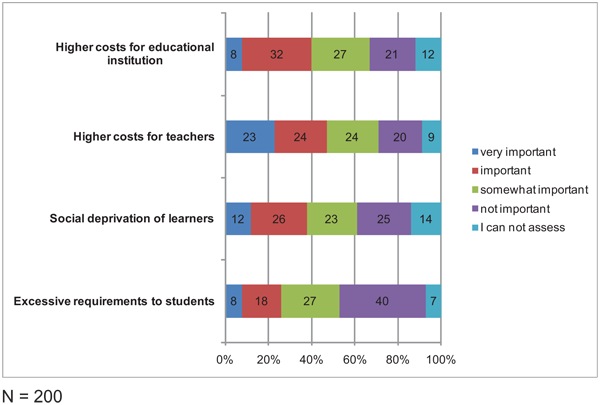
Figure 4. Disadvantages of e-learning in higher education
The appreciation of synergetic interdependencies and compound effects between e-learning and classroom teaching is far from being enthusiastic: only 39% assume significant didactical improvements and even less (38%) of the participants think that the personalization of learning processes can be enhanced considerably by blended learning. At least 41% expect blended learning to impact the reputation of the educational institution in a positive way. However, merely the effects on media richness are evaluated positively by a majority of the respondents (see figure 5).
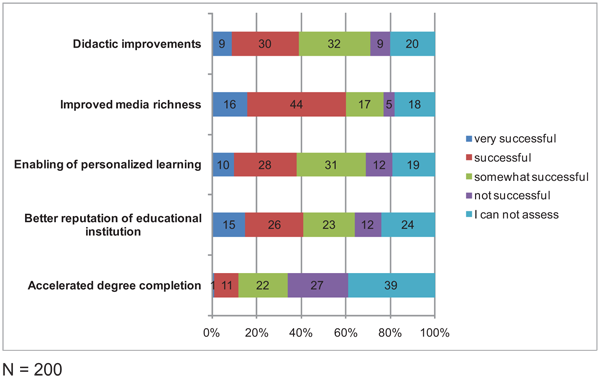
Figure 5. Advantages of blended learning in higher education
IT tools that are dedicated mainly to the support of classroom teaching (like websites, free W-LAN and beamers) are utilised by a high percentage of the participants. Those instruments that serve as enablers for interactive e-learning and electronic communication (like CSCW-systems and Wikis) are underrepresented in the surveyed sample. Once again, this reflects the predominance of quite “simplistic” combinations of classroom teaching and “supporting” IT instruments. After all, 55% of the surveyed university teachers use learning content management systems which nowadays often include communication like, for example, forums and wikis (see figure 6).

Figure 6. IT infrastructure for blended learning
The survey reveals that most of the respondents use e-learning as a mandatory element in their teaching, so that students cannot avoid e-learning. In this case, there is no actual need for motivation instruments. Nevertheless it is quite remarkable that 35% of the participants claim that their students use e-learning voluntarily (see figure 7). While this intrinsic motivation of students is rated No. 2 in the list of motivational instruments by the surveyed teachers, the fostering of positive extrinsic motivation obviously plays no important role in higher education, since only 4% of the participants reward their students for the use of e-learning. These results point towards a general trend associated with new media: although their potential with respect to comprehensive deployment has not yet been utilized completely, they have become part of everyday life, not only in companies but also in educational institutions. Hence, neither companies nor universities are willing to provide additional (monetary or non-monetary) rewards for the use of electronic media.
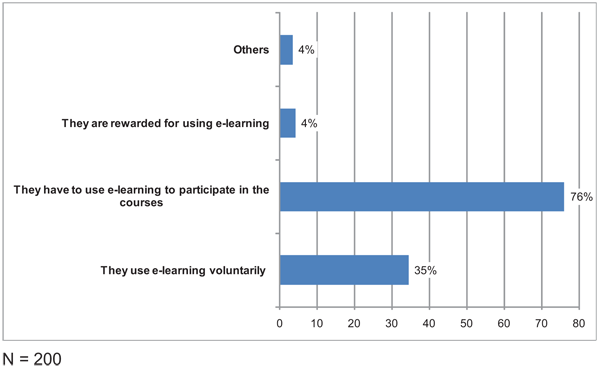
Figure 7. Motivation instruments for the use of e-learning
According to the survey, 48% of the educational institutions do not offer trainings related to e-learning tools. Only 13% commit their students to attend such trainings. The remaining 39% of the participants offer optional trainings at their educational institution. On the one hand, new media apparently represent a standard and thus specific trainings are not required. On the other hand, the lack of trainings with respect to media and self-management skills can be interpreted as a barrier to the use of more sophisticated and comprehensive combinations of learning forms and supporting IT systems, like Wikis, LCMS, CSCW-platforms, etc.
Three fourths of the surveyed university teachers do not have specific instruments for the evaluation of e-learning at their educational institution. Hence, the technocratic infrastructure of the majority of institutions is insufficient with regard to the performance evaluation of e-learning. More than half of the university teachers use evaluation instruments based on students’ assessments. Only one of the participants uses a comparison between the e-learning course and a regular classroom teaching seminar to find out whether e-learning provides better results than traditional teaching forms.
Predominantly, educational institutions cooperate with other organizations of the same category (53%), followed by cooperating with both public and commercial organizations at almost equal percentages respectively. Still, there are 28% of the universities that do not cooperate at all in the field of blended learning/e-learning (see figure 8).
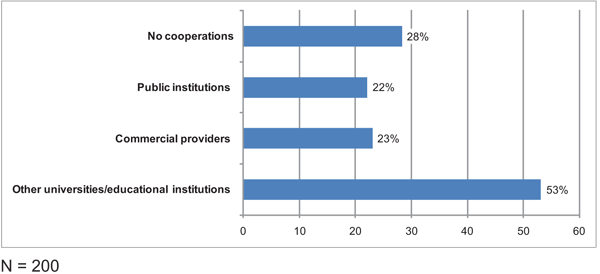
Figure 8. Cooperation forms with other institutions
56% of the participants state a fit in the relationship between e-learning and the philosophy of their university while for the rest of the participants such a specific correspondence does not exist – which does not necessarily mean that there is a misfit: culture and e-learning could simply be unrelated.
Besides the coordination infrastructure for blended learning, its production infrastructure (human resources, knowledge bases, IT-resources, and financial resources) is a critical success factor for the implementation of innovative instruments. With respect to human resources for the generation of e-learning content, there are two strictly different patterns: either teachers generate most of the content themselves (61% of the respondents), or the content is mainly provided by external agents, i.e. commercial and public providers (28%). Balanced patterns of content generation are clearly underrepresented. The fact that content is predominantly generated by teachers is possibly an explanation for the low efficiency of blended learning. For them, the potential reduction in classroom teaching time is likely to be overcompensated by the additional time needed for content generation.
Together, 47% of the interviewed teachers receive funding for blended learning, with the majority (36%) receiving financial support for certain projects. For 11% of the participants the funding for e-learning is not dedicated to projects, but represents a part of the total teaching budget. Especially remarkable is the high percentage of respondents (38%) who cannot assess whether there is any funding for blended learning at their institution. A similar problem exists for another support function: likewise, 38% of the participants cannot assess how many people at their educational institution are responsible for the provision of e-learning support. Hence, in some of the universities communication between the administration of the university and its teachers seems to be impaired.
As mentioned above, the determinants of blended learning performance are either related to the embeddedness of blended learning or to the infrastructure variables depicted in figure 1. Furthermore, the interrelations between embeddedness and infrastructure have to be clarified, since such interdependencies could possibly help optimize both the current level of integration and the infrastructural instruments deployed.
When analyzing the correlations between infrastructure and performance of blended learning, the first, rather surprising result of correlation analysis was the fact that there are only few statistically significant correlations among the numerous infrastructure and performance variables (see table 1). There is a positive significant correlation between the voluntary use of e-learning (by students) and cost disadvantages for the university. Similar to the high costs in “brick & click”-companies, the free choice between learning options for students creates redundancy costs because an additional channel for the learning contents has to be established and many learning contents have to be produced twice (for the two respective channels). However, with a correlation coefficient of 0.288 the correlation must not be overrated: such disadvantages can probably be balanced by other advantages that result from providing parallel learning channels, like, for example, the higher degree of personalization. Especially the deployment of more sophisticated IT systems for the support of blended learning is capable of enhancing learning effectiveness. The use of learning content management systems correlates positively with the factors media richness and personalization. The investment in such sophisticated and integrated tools is likely to foster effectiveness more than, for example, the use of websites and download materials in e-learning. Their application does not correlate significantly with learning performance. Another IT tool, Wiki, – which is technically quite easy to handle and can yet be categorized as sophisticated (in terms of enabling social learning) – bears a significant positive correlation with the factor “improved reach”. Wikis are able to approximate participative face-to-face collaboration among students in teams (e.g., in seminars and workshops) in a virtual environment. Thereby, they provide the possibility of team working and learning even for those students who are not on campus. Thus, blended learning is likely to deliver improved results with respect to learning effectiveness as long as it is supported with integrated and collaborative learning environments like LCMS and Wikis.
In a second step, the relationships between embeddedness and the performance factors were checked for significant correlations. The correlation analysis discloses that almost all performance factors correlate at a high significance with the embeddednes of blended learning in higher education.
Apparently, blended learning concepts at universities are successful when there is a high level of embeddedness, in other words, when blended learning is used as a program of study and not only in single courses. On the one hand, table 1 shows relatively high (> 0.4) positive correlations between the embeddedness of blended learning and several advantages (e.g., didactics, media richness, personalization, etc.). On the other hand, the correlation coefficients for the relationships between embeddedness and some disadvantages (higher costs for institutions, excessive requirements to students) are also positive and statistically significant, but on a lower level (< 0.3). Furthermore, the correlations between effectiveness and embeddedness have higher correlation coefficients than those between efficiency and embeddedness.
First of all, these results of the bivariate analysis show that blended learning enhances effectiveness of learning and teaching more than efficiency. Furthermore the key determinant of performance is embeddedness of blended learning in higher education. Blended learning concepts that go along with a higher level of embeddedness, i.e. especially blended programs of study, deliver better performance than those that are merely based on blended courses. Consequently, the two components of the performance (effectiveness and efficiency) do not equally increase with the increase of the level of embeddedness. Learning efficiency is actually improved by better integration of blended learning, but less than effectiveness. Some learning inefficiencies are even intensified by a deeper integration: A major disadvantage associated with an extended use of e-learning is the risk of social deprivation for learners that communicate mainly virtually with teachers as well as with other learners. While more than 60% of the respondents consider this risk at least somewhat important, its relevance does obviously not depend on embeddedness, hence the risk of deprivation does not increase when the application of blended learning increases.
For the future optimization and development of blended learning concepts in higher education, the mere identification of the key performance drivers is not sufficient. Although infrastructural aspects may not determine the performance of blended learning directly, it is still necessary to identify their relationships to the embeddedness of blended learning in order to clarify the role of infrastructure. It is likely that a certain level of embeddedness requires the existence of certain aspects of the infrastructure. For example, it is likely that the integration of blended learning in university teaching as a program of study necessitates the installation of complex IT systems (e.g., LCMS) to manage the extensive electronic learning contents involved. Thus, the insight in the relationships between application of blended learning and certain infrastructure elements helps university managers find those aspects of infrastructure that are of special importance for the establishment and maintenance of successful blended learning. Furthermore, such knowledge also supports an optimal allocation of resources: if the university management decides to increase the embeddedness of blended learning in higher education, it can focus its efforts and investments on those areas of infrastructure that are closely related to the embeddedness and consequently serve as enablers for blended learning.
There is a significant positive correlation between embeddedness and the respondents’ answers that students are forced to use e-learning (instead of voluntary use or receiving rewards for the use). This is due to the fact that, in blended programs of study, it is inevitable for students to use e-learning – otherwise they wouldn’t get the credits needed to complete their degree. However, if blended learning is only implemented in single courses, students can avoid the use of e-learning by selecting courses that are completely based on classroom teaching. For university management, the close link between embeddedness and the mandatory use of e-learning by students can be most helpful: to foster students’ motivation to use e-learning no additional motivation instruments (e.g., rewards, credit points, etc.) are needed.
According to the survey, a high level of embeddedness requires complex and costly IT systems (LCMS, Wikis, and Content Sharing). These relationships can be explained from two opposite angles: On the one hand, in blended programs of study, such sophisticated IT solutions are mandatory to enable learning processes, as outlined above. On the other hand, they would usually not be deployed along with a low level of embeddedness (i.e. application in single courses) because such major financial investments only pay off for a high level of embeddedness. Along with the required investments in complex information systems, the demand for training in e-learning also increases. This is reflected in the significant and positive correlation between embeddedness and the deployment of training for students. In single blended courses, i.e. in pilot projects or for occasional use, training is not required since the complexity of the deployed IT systems is normally lower.
The significant and positive correlation between the embeddedness of blended learning and the existence of cooperation projects with other universities indicates that there is a need for networking when educational institutions deploy deeply embedded blended learning concepts. There is a specific need for sharing experience and bundling resources in networks with similar partners. Apparently, such inter-university exchange is more important than networking with commercial providers, since no correlation between embeddedness and cooperation with the latter actors could be found.
Surprisingly, there is no significant correlation between the embeddedness and the way funding of blended learning projects is provided. When the level of embeddedness increases, there is still no tendency towards funding for blended learning as part of the total budget of the institution. The surprisingly high percentage of respondents who can not assess whether there is any funding or what form of funding they receive helps explain why there is no significant correlation between embeddedness and the way of funding. This interpretation gets further support from the relationship between embeddedness and the number of persons working in e-learning support functions which is also not significant. As mentioned above, university management does not sufficiently inform their teachers about financial and manpower resources they offer for blended learning activities.
Among all the correlations that could be identified between infrastructure and embeddedness, there is one correlation that stands out with respect to its value and the level of significance: with a correlation coefficient of 0.426 and a significance of 0.000 the relationship between embeddedness and the soft, intangible factor “cultural fit of e-learning with the university’s educational philosophy” is much clearer than the relationships between embeddedness and hard, tangible factors like funding, IT, size of support staff, etc. Once again, this supports the prominent position of culture amongst the sectors of the coordination infrastructure (see figure 1). These close relationships show both the importance of culture as a device for coordination and integration and the big challenge university management faces: it’s the soft factors that matter for the implementation and deployment of blended learning in higher education. If a university wants to take another step in embedding blended learning (i.e. a blended program of study), it has to be aware of the role culture plays for the integration. Either there is already a fit between e-learning and the culture of the university – that serves as a powerful driver and enabler for integration – or such fit has to be established. However, establishing a fit between culture and e-learning, and hence the realignment of the institutional culture, is quite difficult (Jones & O’Shea, 2004; Vaughan, 2007) and can consequently turn out to be very cost-intensive.
The exploratory survey shows that blended learning has not been comprehensively embedded in higher education so far. According to most of the respondents, blended learning has not yet been integrated as a program of study but is only used occasionally in single courses. Classroom teaching is still dominating and is mostly complemented by e-learning forms to administrate and support the predominantly classroom-based learning forms (“pseudo blending”). When e-learning forms are combined with classroom teaching combinations of learning forms such as seminars and internet chats prevail. Due to the lack of diversity, the didactic potential of blended learning, which is mainly based on the combination of diverse elements, has so far not been exploited completely. While most of the respondents assume advantages for students (temporal and spatial flexibility), the evaluation of the effects of blended learning on universities and teachers (costs, reputation of institution, degree completion, etc.) is less positive. Especially in terms of efficiency, blended learning does not lead to significant cost and time reductions for universities and teachers. The low level of embeddedness of blended learning in higher education is also reflected in the IT infrastructures that support blended learning. Here, quite simple forms like Websites, PC pools and download platforms for teaching materials are popular. The main performance driver for blended learning in higher education is the level of embeddedness. The higher this level is, the better the potential of blended learning can be utilized. Especially concepts where blended learning is used as an integrated program of study bear the highest performance potential with respect to the effectiveness of teaching and learning. This relationship is reflected in significant and positive correlations between the embeddedness and most of the performance factors of blended learning. The survey provides evidence that infrastructural aspects do not play the role of performance drivers for blended learning; there are almost no highly significant correlations. However, certain infrastructure aspects are important as enablers of blended learning since they are positively correlated with embeddedness. Especially, the cultural fit between blended learning and the educational philosophy plays an important role for the integration of blended learning while hard factors are considered less vital by most of the participants. Thus, university management has to accomplish an overall cultural change when they want to fully integrate blended learning into university teaching.
Allen, E.; Seaman, J.: Online Nation. Five Years of Growth in Online learning. Needham, Mass.: Sloan Consortium, 2007
Allen, I. E.; Seaman, J.; Garrett, R.: Blending in: the extent and promise of blended education in the United States. Needham, Mass.: Sloan Consortium, 2007
Arbaugh, J.B.; Desai, A.; Rau, B.; Sridhar, B.S.: A review of research on online and blended learning in the management disciplines: 1994–2009. In: Organization Management Journal. 7, 2010, pp. 39–55
Aspden, L.; Helm, P.: Making the Connection in a Blended Learning Environment. In: Educational Media International. 41, 2004, pp. 245-252
Back, A.; Bendel, O.; Stoller-Schai, D.: E-Learning im Unternehmen. Grundlagen – Strategien – Methoden – Technologien. Orell Fuessli, Zürich, 2001
Bersin, J.: The blended learning book: best practices, proven methodologies, and lessons learned. Jossey Bass, San Francisco, 2004
Brahm, T.: The Changing Face of Learning in Higher Education Institutions. Paper Proceedings of the 3rd International scil Congress 2008, St. Gallen. scil, Universität St. Gallen, 2008
Bullen, M.;Janes, D. P.: Making the transition to E-learning: strategies and issues. Information Science Pub., Hershey, PA, 2007
Davies, A.; Ramsay, J.; Lindfield, H.; Couperthwaite, J.: A blended approach to learning: added value and lessons learnt from students' use of computer-based materials for neurological analysis. In: British Journal of Educational Technology. 36, 2005, pp. 839-849
Davis, H.C.; Fill, K.:Embedding blended learning in a university's teaching culture: Experiences and reflections. In: British Journal of Educational Technology. 38, 2007, pp. 817-828.
Eijl, P.; Pilot, A.; Voogd, P.: Effects of Collaborative and Individual Learning in a Blended Learning Environment. Education and Information Technologies, 10, 2005, pp. 51-65.
Garrison, D. R.; Vaughan, N.D.:Blended Learning in Higher Education: Framework, Principles, and Guidelines. Jossey-Bass, San Francisco, 2008
Garrison, D. R.; Kanuka, H.: Blended Learning: Uncovering Its Transformative Potential in Higher Education. In: Internet and Higher Education, 7, 2004, pp. 95-105.
Jones, N.; O’Shea, J.: Challenging hierarchies: The impact of e-learning. In: Higher Education, 44, 2004, pp. 379-395.
Kerres, M.; Nübel, I.: E-Learning in Higher Education in Germany. In: Schwarz, C.; Dittler, U.; Kahler, H.; Kindt, M. (Eds.): E-Learning in Europe - Learning Europe. How did new media contribute to the development of higher education? Waxmann, Münster, 2005
Kirkley, S. E.; Kirkley, J. R.: Creating Next Generation Blended Learning Environments Using Mixed Reality, Video Games & Simulations. In: TechTrends, Linking Research & Practice to Improve Learning, 49, 2005, pp. 42-54.
Laurillard, D.: Modelling benefits-oriented costs for technology enhanced learning. In: Higher Education, 54, 2007, pp. 21-39.
Motteram, G.: Blended education and the transformation of teachers: a long-term case study in postgraduate UK Higher Education. In: British Journal of Educational Technology, 37, 2006, pp. 17-30.
PLS Ramboll Management: Studies in the Context of the E-learning Initiative. Virtual Models of European Universities (Lot 1). Draft Final Report to the EU Commission, DG Education & Culture, 2004
Reay, J.: Blended Learning. A Fusion for the Future. In: Knowledge Management Review, 4, 2001, p 6
Reiss, M.: Koordination und Integration. In: Handwörterbuch Unternehmensführung und Organisation, 4. Aufl., Schäffer-Poeschel, Stuttgart 2004, pp. 688-697
Reiss, M.; Bernecker, T.; Steffens, D.: Kommunikationsinfrastruktur virtueller Unternehmen auf dem Prüfstand. In: Meißner, K.; Engelien, M. (Eds.): Virtuelle Organisation und Neue Medien. TUDpress, Dresden, 2006 pp. 231-242
Schönwald, I.: Change Management in Hochschulen: die Gestaltung soziokultureller Veränderungsprozesse zur Integration von E-Learning in die Hochschullehre. Josef Eul., Lohmar, 2007
Siemens, G.; Matheos, K.: Systemic Changes in Higher Education. In: Technology & Social Media. Special Issue, Part 2, 1, 2010, p 16.
Tastle, W. J.; White, B.A.; Shackleton, P.: E-Learning in Higher Education: The Challenge, Effort, and Return on Investment. In: International Journal on E-Learning, 4, 2005, pp. 241-251.
Thorne, K.: Blended learning: how to integrate online & traditional learning. Kogan Page , London, 2003
Vaughan, N.: Perspectives on Blended Learning in Higher Education. In: International Journal on E-Learning, 6, 2007, pp. 81-94.
Voigt, C.; Swatman, P.M.C.: Contextual E-Learning Evaluation: A Preliminary Framework. In: Journal of Educational Media, 29, 2004, pp. 175-187.
Walter, S.: Blended Learning in der Hochschullehre. Entwicklung, Implementierung und Evaluation eines didaktischen Konzepts am Beispiel der Wirtschaftsinformatik. Haufe, Freiburg, 2007
